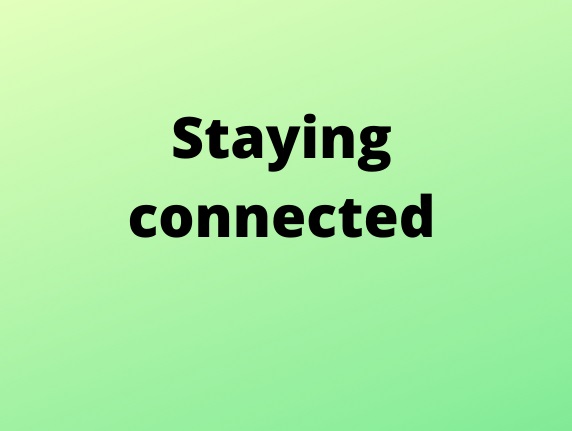TOUCHED BY LYME: Let’s call it physical—not social—distancing, okay?

With the coronavirus pandemic, we’re learning the importance of staying home and avoiding public spaces—and physical encounters with other people.
But the term “social distancing” grates against my sensibilities like fingernails on a chalkboard.
Yes, in the interest of everybody’s health, we need to sequester ourselves in the coming weeks.
But we must do our best to stay socially connected with our families, neighbors, and larger communities. We need each other more than ever in such trying circumstances!
Luckily, social media and other technologies help us do that. Personally, I’m making a special effort to keep in touch with my tribe using the best “remote” tools for the job—phone calls, text, Facebook, email, etc.
I’m also a member of Next Door. The social networking site connects me with neighbors that I may not personally know, but with whom I share common concerns. (Like what’s open and what’s closed in our community during rapidly changing scenarios.)
New online support groups
This seems like a good opportunity to introduce you to the new online support groups sponsored by LymeDisease.org.
We had a network of state-based Yahoo groups for over 15 years, such as “CaliforniaLyme,” “NewYorkLyme,” etc.
(CaliforniaLyme was a lifesaver back in 2005, when my daughter first took ill with what turned out to be Lyme disease. All the doctors we saw insisted there was “nothing wrong” with her. People on the Yahoo group offered me information and advice that I truly believe saved her life.)
Alas, in 2019, Yahoo drastically changed how the groups worked, making them much less user-friendly. Thus, a few months ago, LymeDisease.org transferred every group in our network to a new online platform called “groups.io.”
You can join by clicking here.
These groups function a little differently than the old Yahoo groups. Everyone who joins automatically becomes part of the US National Lyme Group and will receive daily digests of messages posted in the previous 24 hours. (You can change your settings to see them more or less often, as you prefer.)
And there are subgroups for individual states, as well as one for parents of children with Lyme disease.
I believe that staying in touch with your fellow members of the Lyme community is as important as staying in touch with the neighbors where you live.
If you haven’t done so yet, I also recommend you sign up to receive LymeDisease.org’s free weekly email newsletters.
We all have to physically distance ourselves from others for the foreseeable future. But, please, let’s commit to staying socially connected to family, friends, neighbors—and others in the Lyme community.
With everybody’s help, we’ll to make it through this difficult time.
TOUCHED BY LYME is written by Dorothy Kupcha Leland, LymeDisease.org’s Vice-president and Director of Communications. She is co-author of When Your Child Has Lyme Disease: A Parent’s Survival Guide. Contact her at dleland@lymedisease.org.




















We invite you to comment on our Facebook page.
Visit LymeDisease.org Facebook Page